On View
The Latest Costume Institute Show at the Met Is All About the Cyclical Nature of Couture Trends—See Images Here
The exhibition offers a fractured timeline of sartorial history that fits in perfectly with the topsy-turvy world of 2020.
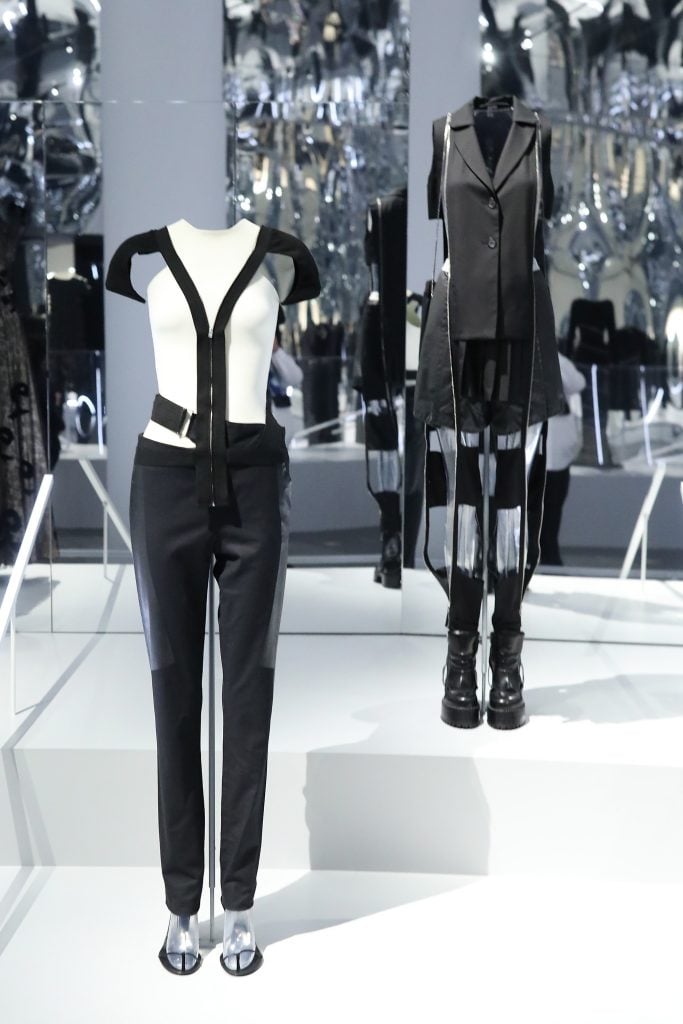
The exhibition offers a fractured timeline of sartorial history that fits in perfectly with the topsy-turvy world of 2020.

Caroline Goldstein

After almost six long months in lockdown, the Metropolitan Museum of Art’s Costume Institute show is finally open—and it’s about time. Literally.
The show, “About Time: Fashion and Duration,” offers a fractured timeline of sartorial history that fits in perfectly with the topsy-turvy world of 2020. It also coincides with the Met’s 150th anniversary, and joins a series of exhibitions that honor its storied history.
In the hefty catalogue, the show’s organizers say the exhibition takes creative license when it comes to keeping time, mainly by applying Henri Bergson’s philosophy of la durée, which posits that “time exists as a continuous flow and the relationship between the past and present is one of coexistence rather than succession,” according to the curators.
“Fashion is indelibly connected to time,” curator Andrew Bolton said in a statement. “It not only reflects and represents the spirit of the times, but it also changes and develops with the times, serving as an especially sensitive and accurate timepiece.”
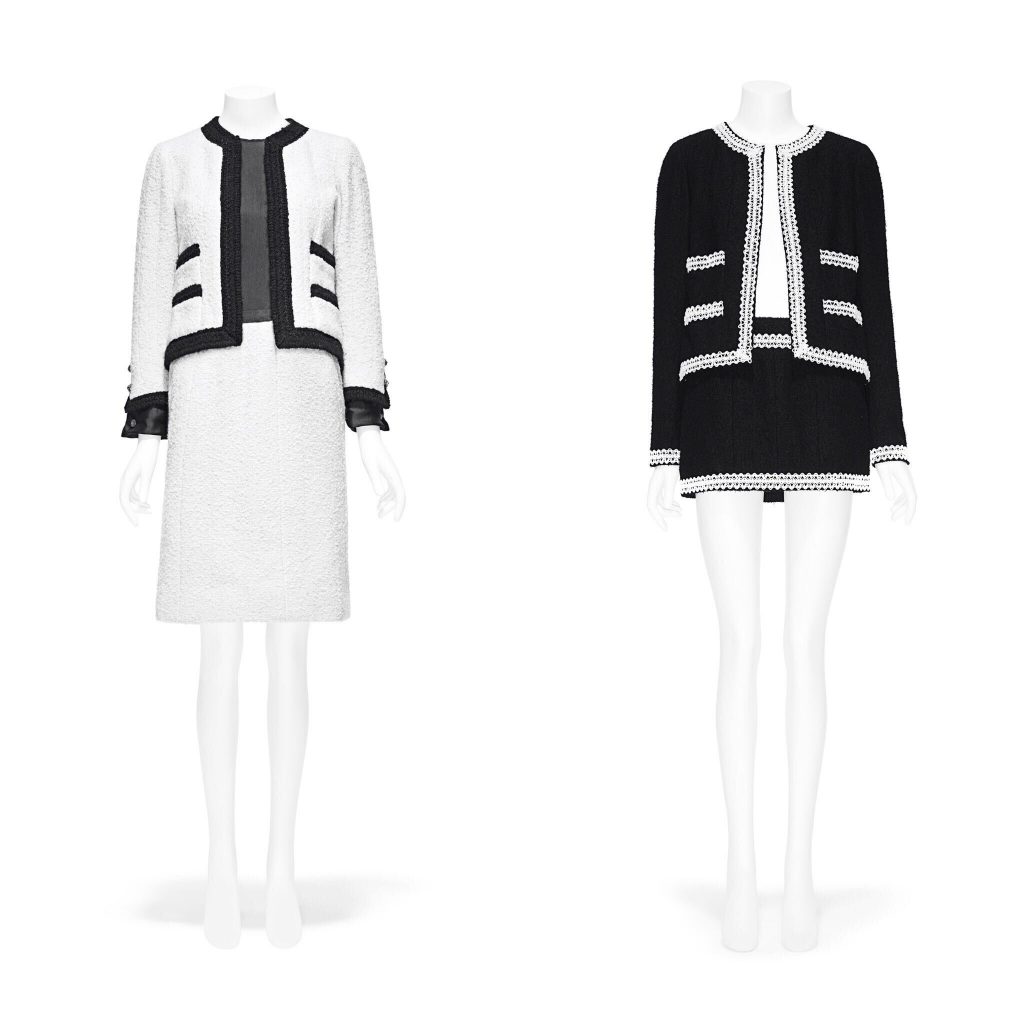
Left: Suit, Gabrielle Chanel, (spring/summer 1963); Right: Suit, Karl Lagerfeld for Chanel (spring/summer 1994). Image courtesy of The Metropolitan Museum of Art,Photo © Nicholas Alan Cope.
The show also borrows ideas from the Pulitzer Prize-winning author Michael Cunningham, and relies heavily on the books of Virginia Woolfe. The show’s website features a primer on Woolfe writings that helped inspire the presentation, including To the Lighthouse (1927), Orlando: A Biography (1928), and Mrs. Dalloway (1925).
Philip Glass’s composition, The Poet Acts, from “The Hours,” a film adaptation of Mrs. Dalloway, plays in the galleries, while recordings of Nicole Kidman and Meryl Streep reading Wolfe passages are also featured.
The show, which is set up according to two timelines, each featuring 60 ensembles (for each minute in an hour), presents works by designers who constantly mine the past for ideas.
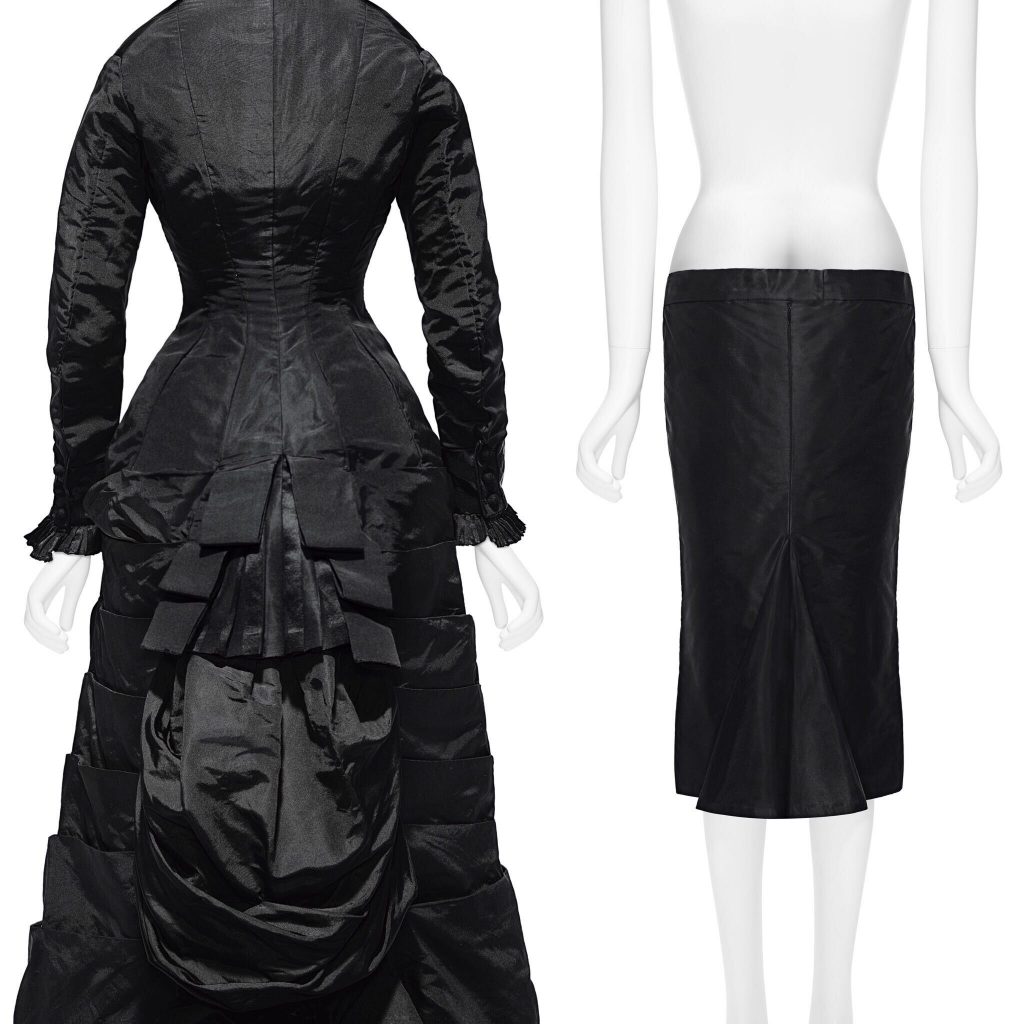
Left: Afternoon dress, American, (ca. 1877); Right: “Bumster” Skirt, Alexander McQueen (fall/winter 1995-6). Both Image courtesy of The Metropolitan Museum
of Art, Photo © Nicholas Alan Cope.
The first timeline is chronological, with garments ranging from 1870 through 2020, and offers a vision of fashion and style as representative of shifting (and mostly Western) social and cultural ideas.
The second timeline is an “interruption,” and presents contemporary works that usually riff on their predecessors, as in, for example, Karl Lagerfeld’s update of Coco Chanel’s quintessential boucle suit, or Alexander McQueen’s infamous “bumster” skirt, which fetishizes aspects of a 19th-century American work.
Altogether, the two timelines suggest the cyclical nature of fashion.
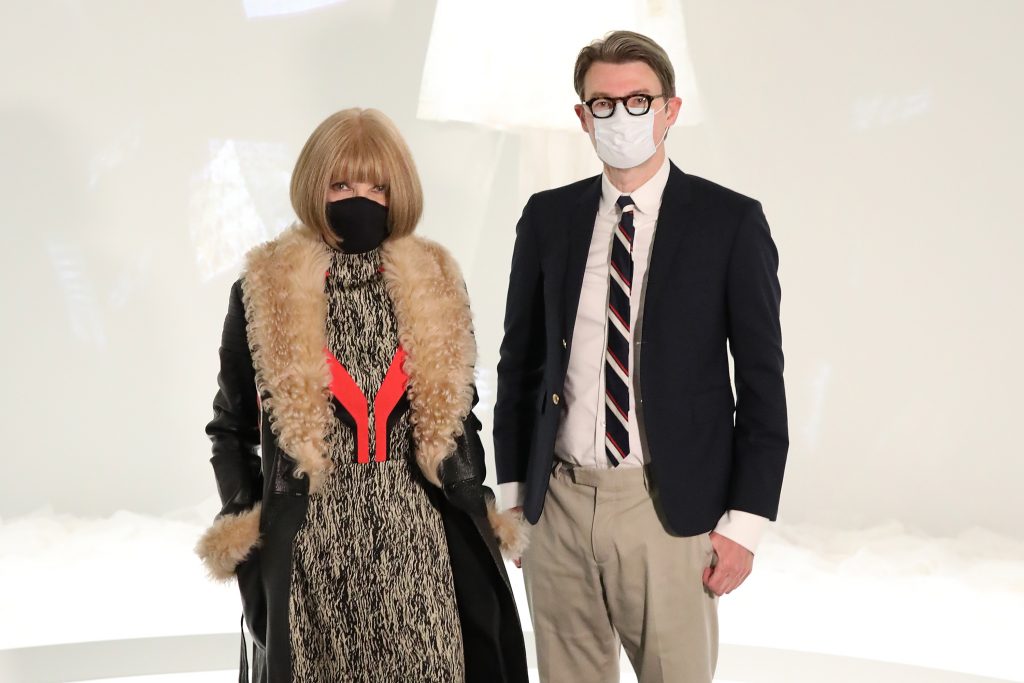
Anna Wintour and Andrew Bolton at “About Time: Fashion and Duration” at the Metropolitan Museum of Art in New York City. (Photo by Taylor Hill/Getty Images)
Alongside a few white items dropped in for effect, the pieces are almost entirely black, emphasising the form, construction, and application of each garment, and making the case that each is a sculpture in its own right.
In one gallery, mirrors cover every surface of the background, reflecting slivers of each ensemble and adding to the feeling of “temporal autonomy,” in the words of the curators.
Designed by Es Devlin, who transformed the galleries into stage sets for this out-of-time presentation, the show is truly immersive and all-consuming. And the presentation fits in with the Costume Institute’s tried-and-true melange of history, literature, pop culture, and—of course—clothes, which are as swoon-inducing as ever.
“About Time: Fashion and Duration” is on view at the Metropolitan Museum of Art through February 7, 2021.

Left: Afternoon dress, American, (ca. 1877); Right: “Bumster” Skirt, Alexander McQueen (fall/winter 1995-6). Both Image courtesy of The Metropolitan Museum
of Art, Photo © Nicholas Alan Cope.
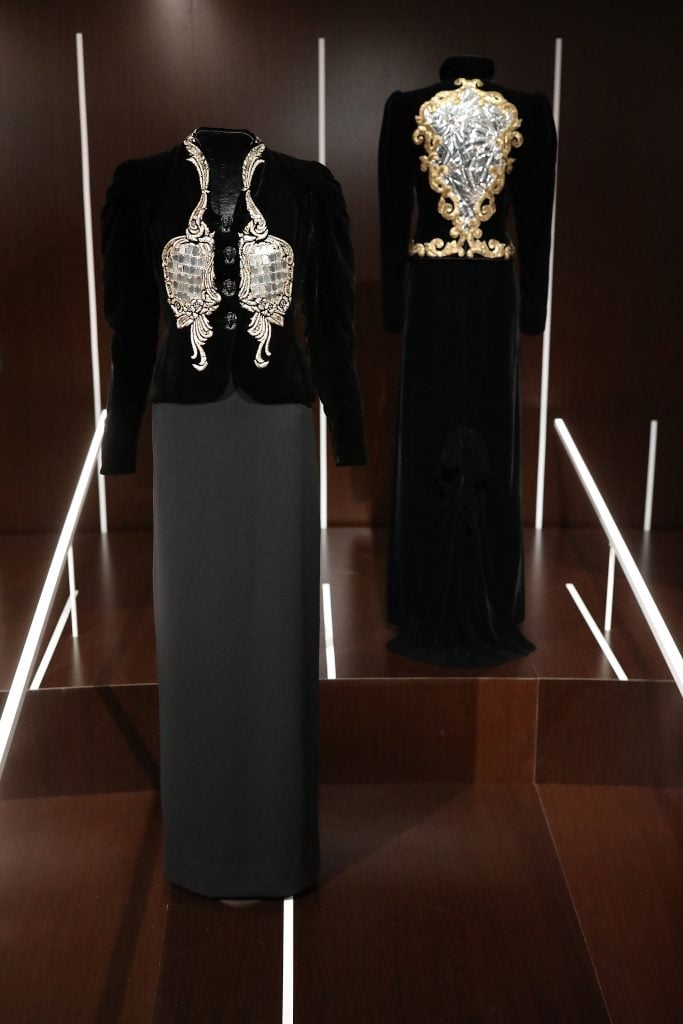
Installation view “About Time: Fashion and Duration” at the Metropolitan Museum of Art. (Photo by Taylor Hill/Getty Images)
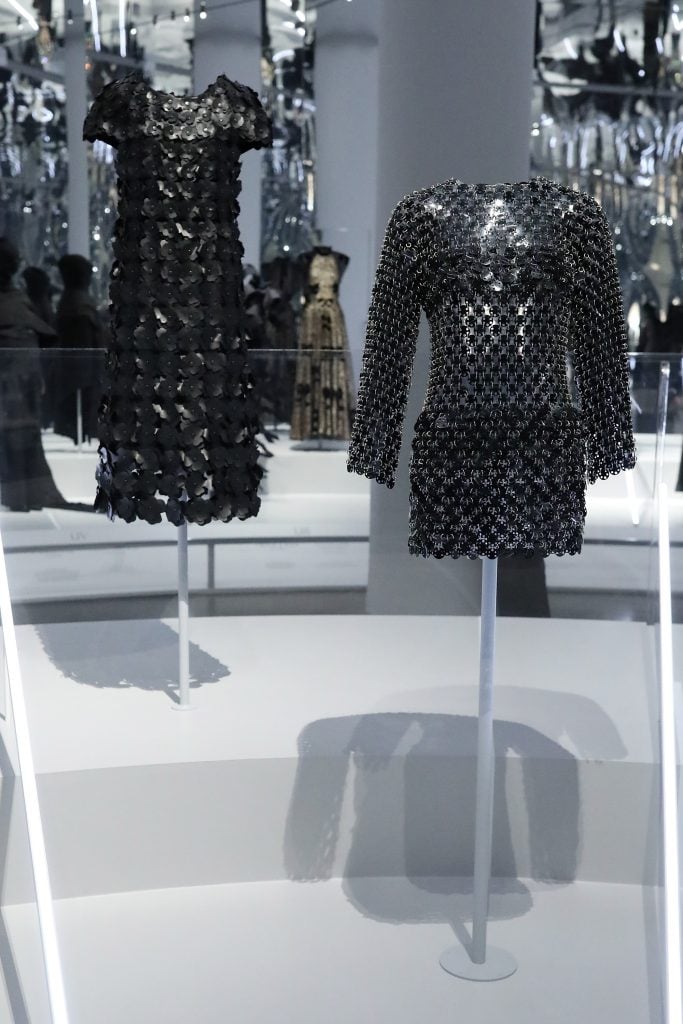
Installation view “About Time: Fashion and Duration” at the Metropolitan Museum of Art. (Photo by Taylor Hill/Getty Images)
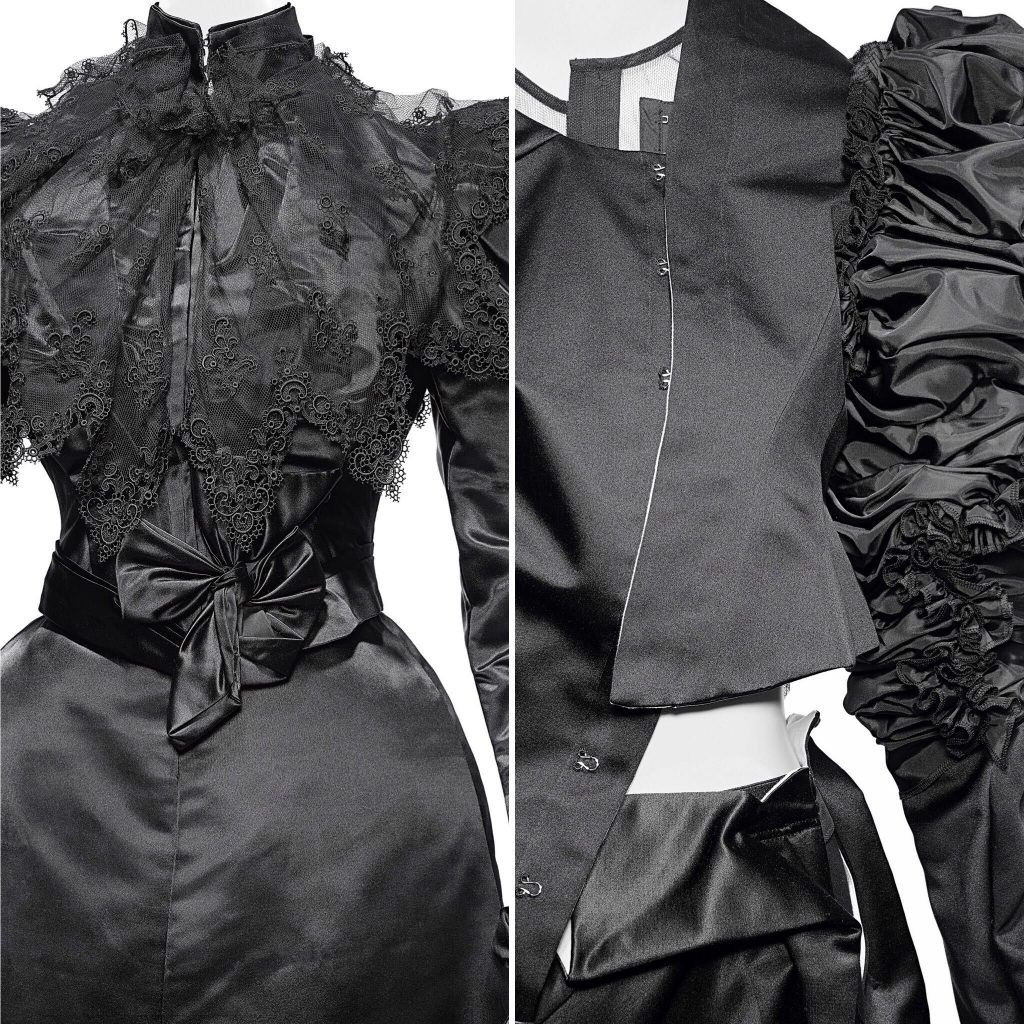
Left: Dinner dress, Mrs. Arnold (ca. 1895; Right: Ensemble, Comme des Garçons (fall/winter 2004-5).Image courtesy of The Metropolitan Museum of Art,Photo © Nicholas Alan Cope.
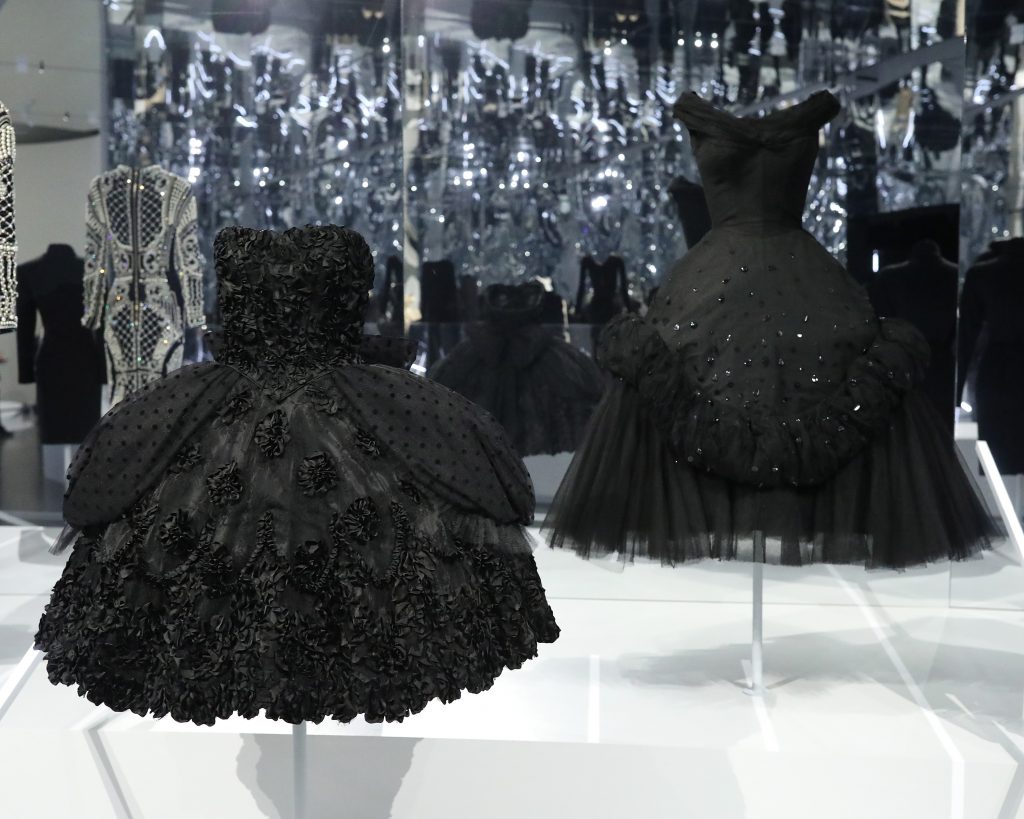
Installation view “About Time: Fashion and Duration” at the Metropolitan Museum of Art. (Photo by Taylor Hill/Getty Images)
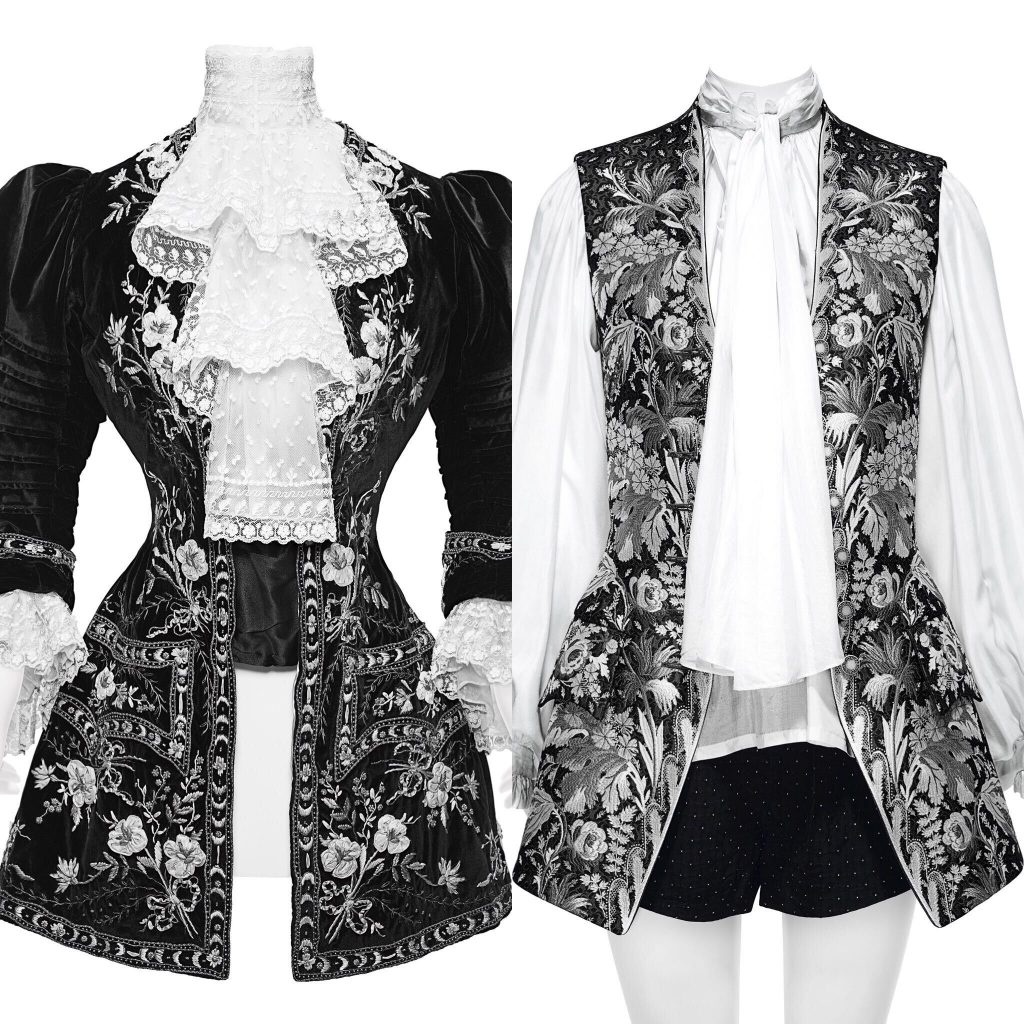
Left: Riding jacket, Morin Blossier (1902). Right: Ensemble Nicolas Ghesquière for Louis Vuitton (spring/summer 2018). Image courtesy of The Metropolitan Museum of Art, Photo © Nicholas Alan Cope.
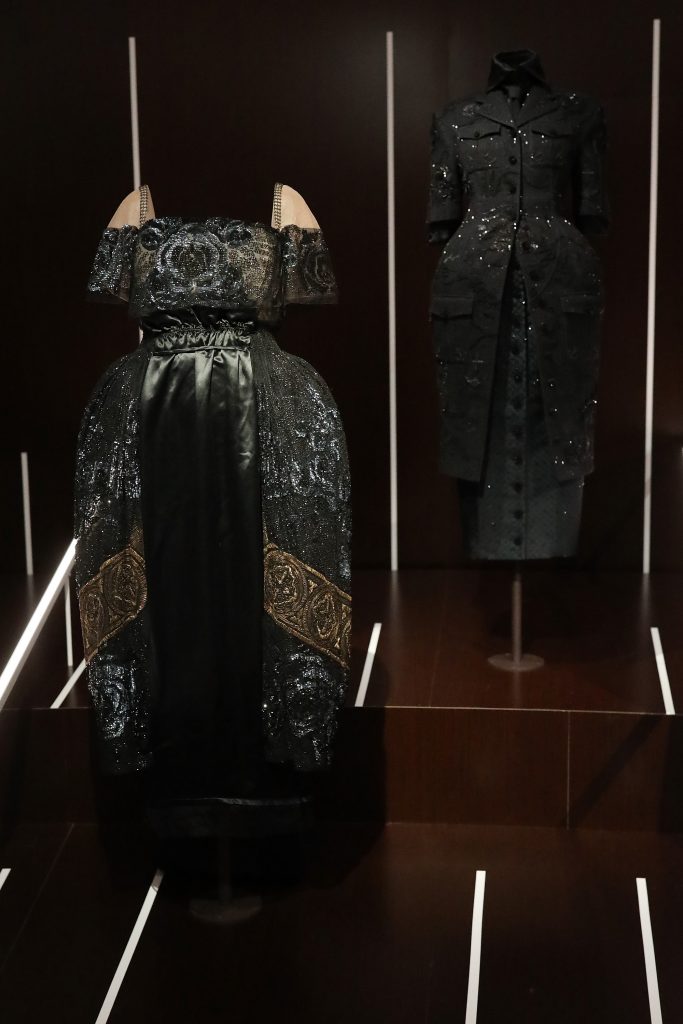
Installation view “About Time: Fashion and Duration” at the Metropolitan Museum of Art. (Photo by Taylor Hill/Getty Images)
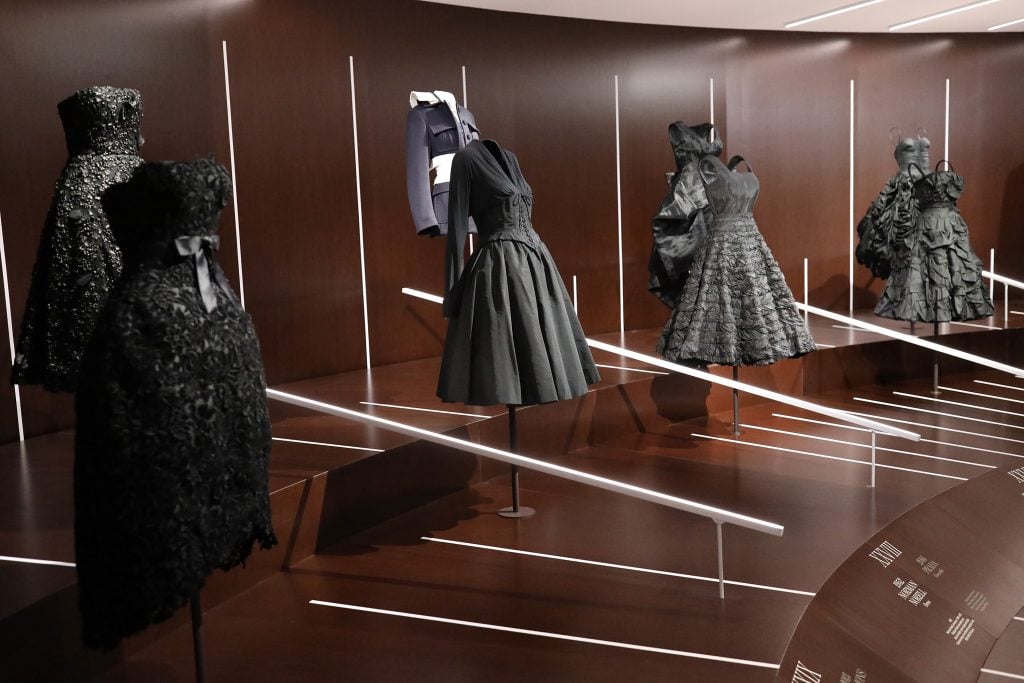
Installation view “About Time: Fashion and Duration” at the Metropolitan Museum of Art. (Photo by Taylor Hill/Getty Images)